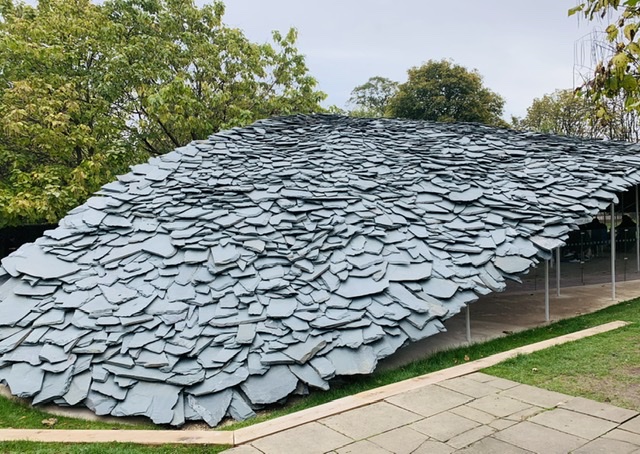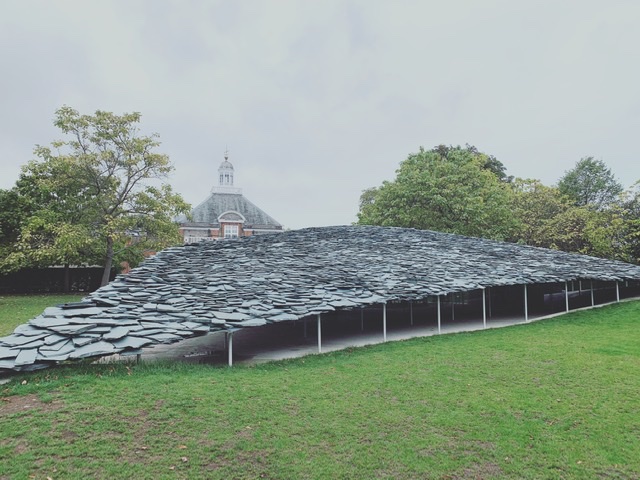ArtDecison’s Irina Vernichenko and Xenia Vytuleva-Herz, art and architecture historian at the ETH, Zurich discuss temporary pavilions and unorthodox practices that are used in this “architecture with an expiry date”.
EXPIRY DATE
Irina Vernichenko: Sustainability is the backbone of great design. Why are pavilions examples of great architecture?
Xenia Vytuleva-Herz: It is exactly this typology of temporary, ephemeral building, balancing on the border of existence and non-existence that allows radical experimentation. By saying ‘a pavilion”, we already expect an experiment. A pavilion communicates ideas and belongs to the future. Today it became a tool of translation of territories and cultures, it is what the Serpentine gallery does by inviting radically diverse international architects to Hyde Park in the center of London. It is operating with this idea of displacement, with an incredible element of re-thinking, playing with traditions.
The logic of the Serpentine pavilion 2019, built by Junya Ishigami, was firstly: “to reinterpret traditional architectural convections” and secondly: “to reflect natural phenomena.” It means that Junya Ishigami is coming back to tradition of Japanese architecture, to a tradition of the sliced roof made of a very particular kind of stone and introducing this essentially Japanese tradition into a completely different territory – into the territory of Hyde park.
I V: Can I ask you about tradition and the new language of architecture?
X V: It can be ambivalent and I love ambivalence in this case. This attention to quasi- vernacular architecture could flip – as if this sliced roof is a 3d printed. It’s a new way of correctness and new way of architectural ethics of dealing with the tradition, of being responsible and acknowledging the tradition.

IV: What does return to core values in architecture mean to you?
X V: Good architecture always questions core values. What is it for? This question elevates architecture as a thinking discipline, and provides it with a status of highly expanded territory. Architecture is responsible for the environment, therefore for human environment, and hence aids in rearticulating the question of what is human today.
I V: What is human today?
POETRY
X V: The crucial point that Serpentine Pavilion 2019 is introducing in today’s architectural discourse is the poetics of architecture. The architecture needs to come back to operate with such notion as poetry, poetic view belongs to this discipline. Not by chance it is reflected in the very image of the pavilion: natural and traditional heavy roof laid out of thick slices of dark grey, almost black stone is elevated above the earth on the quasi invisible strings, almost transparent columns. It gives us an impression of a moving cloud of a greyish cloud that cannot be blown away.
Another aspect that was debated in professional literature: from the preliminary drawings the architect was placing pavilion in a heavy rain, highlighting heavy drops creating an artificial waterfall from the roof. From the very first draft this pavilion was meant to be in dialogue with the temporal phenomenon that is weather, providing a stage for the waterfall, making columns as a prolongation of streams of rain. It’s an incredibly poetic line of architecture.

UNFORSEEN
An opposition towards total control of environment gives space to somewhat more precious: to poetry, unpredictability or serendipity of unforeseen changes.
I V: If the manifest of architecture is written, what is it about?
X V: The time of manifests in architecture is over. These days it is not manifesting, but questioning. And the more intelligent, sharp, elegant and even ambiguous the question is framed, the more interesting it is for me.
I V: Is the architecture expanding or shrinking now?
X V: On a mass scale the grand aura of architecture is shrinking, its shrinking to design, to the functional form and to being Instagramable. On the other hand, architecture is radically embracing neighboring fields; such as psychology, biology, Anthropocene, economy, politics and cultural anthropology. Architecture can be a greater player in the new set of values.


Comments